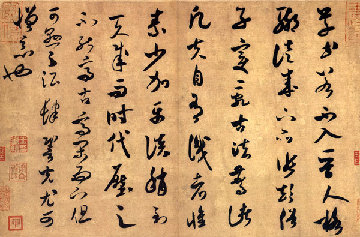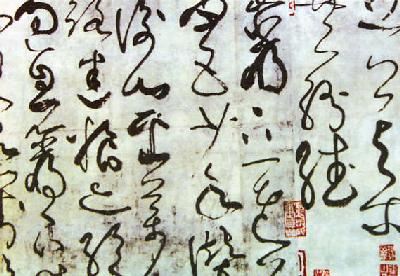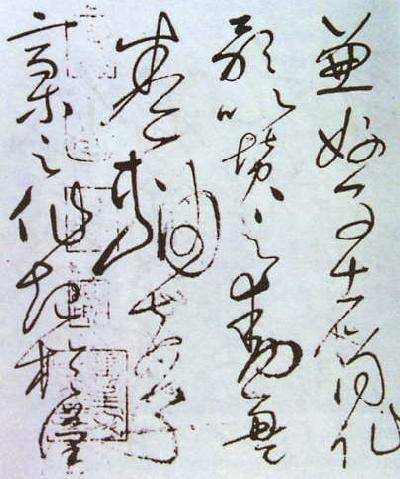
Caoshu(cursive hand) is characterized by sketchy, simplified forms of characters, often distorted or exaggerated to achieve an internal rhythmic appearance within the compositions of characters. In theory, any character can be written in the style ofCaoshu, for instance many course characters appeared in inscriptions on bronze wares. However,Caoshuin literature refers to a specific style developed from QinLi(official script in the Qin Dynasty), formed around the Western Han Dynasty (206BC-8AD) and prevalent in the Eastern Han Dynasty (25-220).
 |
| "Gushi Tie" by Zhang Xu |
Historical records show that
Caoshucame into being in the pre-Qin period due to the fact that the fierce competition among various states made them often keep alert of any move of other states, which put a high demand on the communication
 |
| "Zixu Tie" by Huai Su |
Caoshuin the early period retained much feature of
Lishuand was called
Zhangcao(a coarse style formed by breaking up the forms of
Lishu). From the Eastern Han Dynasty (25-220) to the Wei (220-265) and Jin (265-420) dynasties,
Caoshugot rid of the trace of
Lishustrokes, and employed a large number of running strokes, and was called
Jincao(the modern cursive hand). By the Tang Dynasty (618-907),
Caoshudeveloped further, was written in a lively and vigorous way and was called
Kuangcao(crazy cursive hand).
BecauseCaoshuuses lots of running strokes and only has the outline of the characters, it is illegible to most readers and affects its function of communication. Therefore, thoughCaoshucame into being comparatively early, it didn't become in written form within a state, whileZhuanshu(seal script) andLishu(official script) could not be written hastily, henceCaoshuemerged. one of the calligraphies in general use. However, it has been always loved by many people. FamousCaoshucalligraphers include Zhang Zhi, Zhang Xu, Huai Su and so on.
